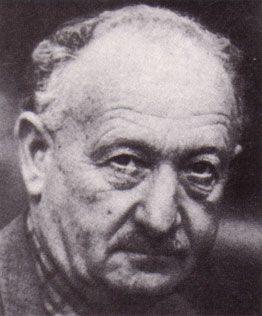Alexandre Trauner Death
Alexandre passed away on December 5, 1993 at the age of 87 in Omonville-la-Petite, Manche, France.
When did Alexandre Trauner die?
December 5, 1993How old was Alexandre Trauner when died?
87Where did Alexandre Trauner die? What was the location of death?
Omonville-la-Petite, Manche, France
Alexandre Trauner Birthday and Date of Death
Alexandre Trauner was born on August 3, 1906 and died on December 5, 1993. Alexandre was 87 years old at the time of death.
Birthday: August 3, 1906
Date of Death: December 5, 1993
Age at Death: 87
Alexandre Trauner - Biography
Hungarian-born Alexandre Trauner nee (Sándor Trau) came to Paris in 1929 to escape the anti-semitic Horty regime in his native country, and to paint - but instead became involved in the film industry as an assistant to the famous art director Lazare Meerson. Influenced by cubism and impressionism, he embraced the intellectual freedom in the French capital and branched out into architecture, even fashion design and tapestry. However, by the mid-1930's, Trauner had worked his way up to being a motion picture production designer in his own right. He became part of a famous collaboration with director 'Marcel Carne', writer Jacques Prevert and the composers Joseph Kosma and Maurice Jaubert, on a number of seminal French films, including Hotel du Nord (1938) and Le Jour se Leve (1939). Trauner's meticulously researched, intricate studio sets evocatively captured not only the virile, romantic atmosphere of Paris boulevards and canals (Children of Paradise (1945) and Gates of the Night (1946)) , but also a fog-enshrouded Le Havre (Port of Shadows (1938)) and a windswept Brittany coastline (Stormy Waters (1941)).Post-war, and having gained international recognition, Trauner became much sought-after by Hollywood directors with European assignments. His next famous partnership was with Billy Wilder, who invited him to come to the U.S., where Trauner was subsequently based. He travelled to the Congo, detailing Sister Luke's hardships for Fred Zinnemann's The Nun's Story (1959), then worked on some of Wilder's best films during the next few years, creating the effective, lived-in ambience of The Apartment (1960), and the stark cold war atmosphere of divided Berlin for One, Two, Three (1961). After that, he was back in action as art director on another romantic Parisian melodrama, Anatole Litvak's charming and moody Goodbye Again (1961). Demonstrating his versatility, he created impressive visuals of war-torn Warsaw (filmed on location) for The Night of the Generals (1967); built the most sumptuous of Victorian sets at Pinewood, replete with equally opulent Baker Street interiors, for Wilder's The Private Life of Sherlock Holmes (1970); and summoned an exotic vision of the fictional kingdom of Kafiristan for John Huston's cracking adventure yarn, The Man Who Would Be King (1975). Coming full circle, Trauner wound down his distinguished career back in France, with a darker view of Paris via the Metro and its inhabitants, in Subway (1985); and created a near-perfect replica of the Paris Blue Note Club and New York's Birdland at Studio Clair (in the Parisian suburb of Epinay-sur-Seine) for the most compelling of jazz films, 'Round Midnight (1986).For a man who enjoyed one of the longest careers in French cinema, Trauner remained remarkably self-effacing, even after winning his Oscar (for 'The Apartment') and three Cesar Awards. He attributed much of his success to invention, and to not necessarily sticking to reality, but to be continuously 'new and surprising'.








